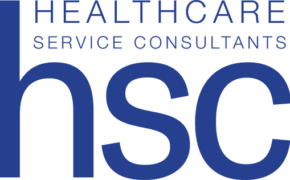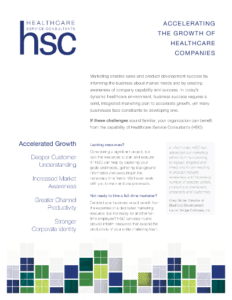
Not all thought leadership content is (or should be) equal. Thought leadership content must possess a level of depth appropriate to the expertise, concerns, and questions of your primary buyer personas. Tailoring your content to specific personas and audiences is crucial for building credibility and creating interest.
Unfortunately, a high percentage of healthcare IT thought leadership content falls short. It lacks educational value. This content often fails to articulate the depth of a company’s knowledge and expertise in terms that build credibility and faith in the company’s capabilities.
In this blog, we examine the purpose of thought leadership content and explore common pitfalls that limit the effectiveness of thought leadership content. We also discuss how to build great thought leadership content that uses suitable language, depth of detail, and supporting evidence to boost your healthcare IT company’s credibility—and convey to prospects why your company is best able to solve a particular set of problems.
Understanding Thought Leadership: What It Is, What It Isn’t
Before we delve into the attributes of good thought leadership content, let’s consider what it is.
At its core, thought leadership is the art of crafting educational, non-promotional content that resonates with key buyer personas. Such content may include written copy, videos, presentations, or podcasts.
Thought leadership is not a sales pitch. This content must go deep into key problems your company solves; ones that resonate with your buyer personas. Successful thought leadership doesn’t only identify issues. It provides deep and novel insights into them and addresses methodologies for resolving them.
One key aspect of effective thought leadership is its ability to subtly allude that a company can solve problems without saying it. Instead of mentioning a healthcare IT product, thought leadership strategically positions your company as knowledgeable and trustworthy. Your target audience assumes your organization is capable of solving the challenges faced by clinical, technical, and operational stakeholders.
Avoiding Common Pitfalls
There are unfortunate instances where well-intentioned thought leadership content falls short. Imagine stumbling upon a blog post discussing DICOM data migrations written by someone without a technical background. It lacks depth, doesn’t incorporate the technical language that reflects the educational level of a PACS administrator or clinical IT analyst, and contains generalizations and factual inaccuracies. Such content fails to spark interest among the target personas. It also risks damaging the credibility of the organization.
Effective thought leadership content must be relevant. It should include accurate, detailed, and include meaningful insights that educate and engage specific stakeholders. The goal is to increase awareness of problems affecting their organization; ones you can solve.
Tailor Content to Your Target Audience
Avoiding these pitfalls requires a nuanced understanding of your target personas. Different personas require different content. Focus first on writing about the “right” stuff.
For instance, clinicians are likely more interested in the clinical and operational benefits of solving a real-world problem. They value time savings without any extra effort. What if your audience consists of technical professionals? Thought leadership content might highlight the technical and IT management aspects of a problem, as well as the downstream impact on human resources, time, and cost.
Providing targeted, concise, and relevant information that caters to the specific needs of each buyer persona maximizes the impact of your thought leadership efforts. Remember, quality trumps quantity. In a world where time is precious, capturing your audience’s attention with the right information is key.
Balance Depth and Digestibility
Besides considering the information needs of each buyer persona, understand their preferred methods for consuming information. For instance, technical people might prefer fact-dense, word-dense documents. Clinicians might appreciate concise, bulleted, research-backed data that includes online citations.
It’s also beneficial to consider non-written forms of content such as video and podcasts. Recognize that most people have little time. Strike the right balance between information depth and brevity. This ensures your healthcare IT audience consumes the thought leadership content you painstakingly prepared.
Thought Leadership as a Strategic Product Marketing Tool
Thought leadership is a strategic approach to product marketing. It complements other product marketing tactics. Thought leadership content that has depth and tailors to your primary buyer personas will help:
- build credibility
- establish your company as an industry thought leader
- drive leads
Interested in creating impactful thought leadership content? Content that showcases your expertise and provides tailored, educational material that resonates with your target audiences? Our healthcare IT product marketing experts can help you develop content that uses the appropriate language, style, and level of depth needed to capture the attention and consideration of your readers. Contact us to learn more.




